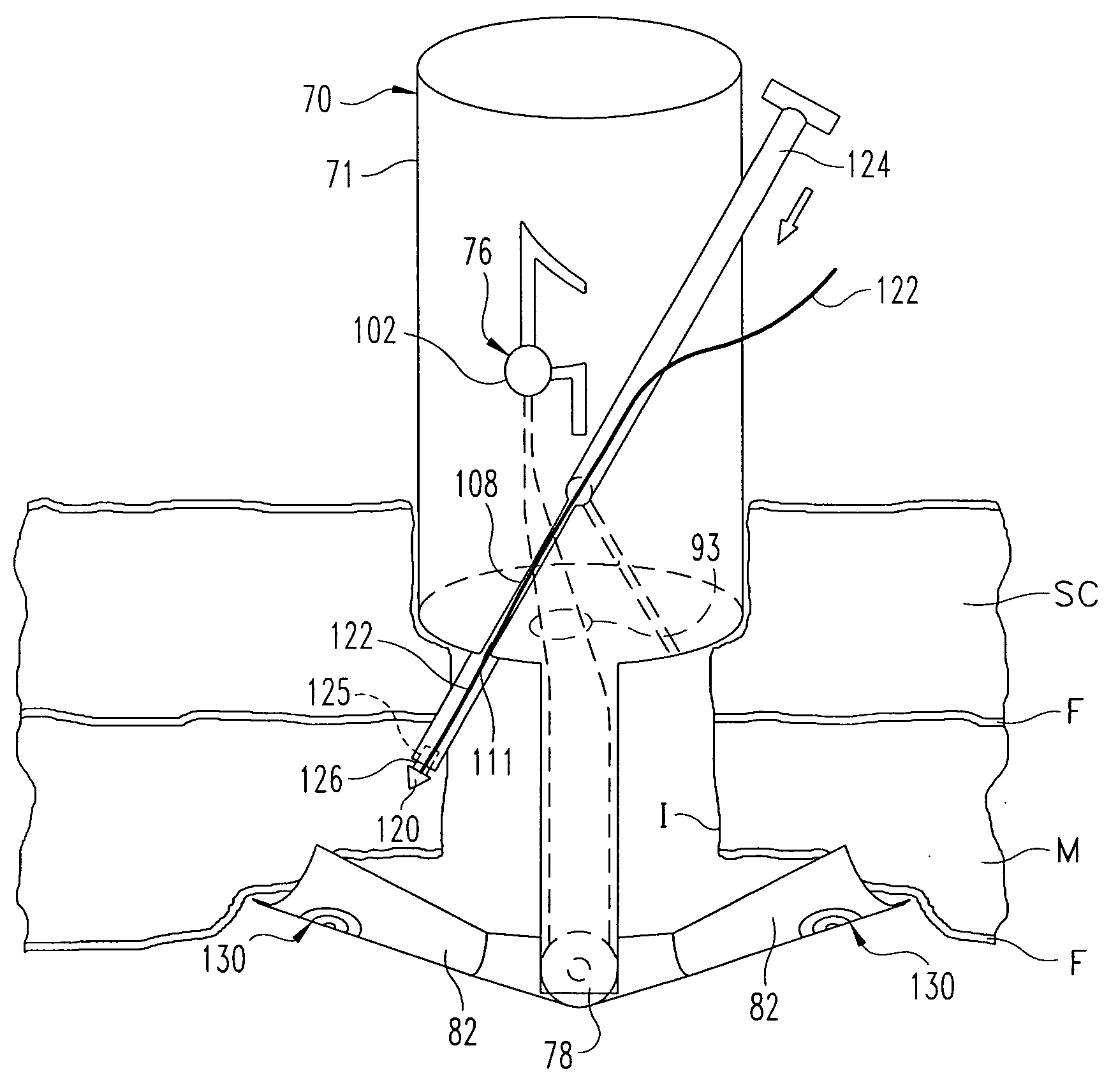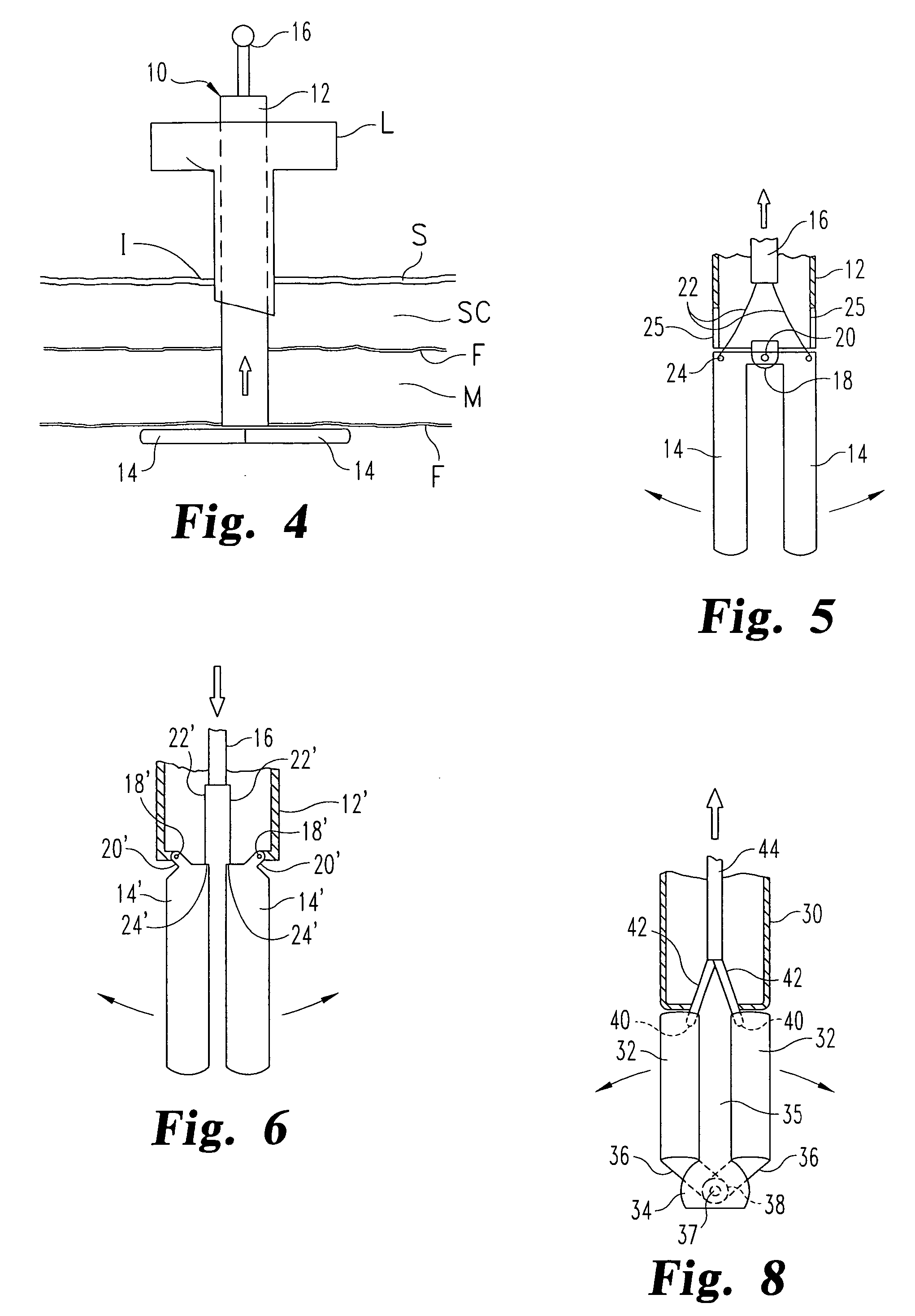Laparoscopic port site closure tool
a port site and tool technology, applied in the field of surgical suturing devices, can solve the problems of insufficient closure of surgical defects, difficult and time-consuming incision closure, and herniation of omentum or bowel, and achieve the effect of simple and quick operation
- Summary
- Abstract
- Description
- Claims
- Application Information
AI Technical Summary
Benefits of technology
Problems solved by technology
Method used
Image
Examples
Embodiment Construction
[0041] For the purposes of promoting an understanding of the principles of the invention, reference will now be made to the embodiments illustrated in the drawings and described in the following written specification. It is understood that no limitation to the scope of the invention is thereby intended. It is further understood that the present invention includes any alterations and modifications to the illustrated embodiments and includes further applications of the principles of the invention as would normally occur to one skilled in the art to which this invention pertains.
[0042] One phase of a typical laparoscopic procedure is shown in FIG. 1. In particular, a laparoscopic tool L defining a port P is extended into a small incision I. The incision passes through multiple tissue layers for access to the patient's abdomen, for instance. Thus, the laparoscopic tool extends through the skin, subcutaneous and muscle layers, as well as the various fascia layers to provide access to th...
PUM
 Login to View More
Login to View More Abstract
Description
Claims
Application Information
 Login to View More
Login to View More - R&D
- Intellectual Property
- Life Sciences
- Materials
- Tech Scout
- Unparalleled Data Quality
- Higher Quality Content
- 60% Fewer Hallucinations
Browse by: Latest US Patents, China's latest patents, Technical Efficacy Thesaurus, Application Domain, Technology Topic, Popular Technical Reports.
© 2025 PatSnap. All rights reserved.Legal|Privacy policy|Modern Slavery Act Transparency Statement|Sitemap|About US| Contact US: help@patsnap.com



